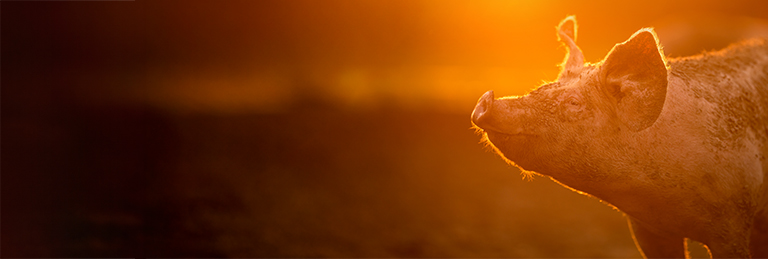Adjustments were made to the working methods of dairy farmer Jos Seuntiëns (210 cows, 4 milking robots) based on the HyCare approach barely 1.5 years ago. Everything is focused at the highest hygiene and the prevention of infections. Six aspects have been fundamentally addressed: pore-free feeding alleys, germ-free living environment, clean and germ-free drinking water, pest control, structural hoof care and support for a healthy transition (see box below).
Now that the results of the cows are slowly coming in, Wilco de Crom, divisional manager for dairy cattle at MS Schippers, is pleasantly surprised. "We thought it would work, also because HyCare gives great improvements in pigs. Yet this is far beyond any expectations.” On the other hand, it is also no surprise that the results are good. "We know that 85 to 90% of the problems in cows can be traced down to infections. If you stop that, you'll make big strides."
Delivering way more milk
The results: In 1.5 years' time, the lifespan has increased by 6 months, according to independent CRV figures. That is a lot. The average in the Netherlands has barely increased by one month since 2011, while the sector's goal is to extend the life span by half a year by 2020. A longer life span means more old cows with higher milk production. Milk yield rose by 1,000 kilos to 11,500 kilos a year. The fat content is 0.11 percentage points higher and the protein content is 0.09 percentage points higher.
All this means that 245,000 kilos more milk can be delivered within the phosphate quota. Each extra liter of milk gives a marginal balance (milk price minus feed costs) of € 0.22 per kilo. For the company this means a return of almost € 54,000.
In addition, there are even lower costs for the veterinarian and an unpayable aspect: easier and more enjoyable work because there are fewer health problems and cows enter the robot more easily.
Gaining more experience
The coming months the experience with HyCare at this company will continue. In January, MS Schippers also opens its own testing company where the concept is further developed and visitors are given more background information.
De Crom expects the concept to be gradually rolled out in practice starting next year. Initially, this will be mainly at companies with a milking robot because of the routing. In addition, they must have or make a hygiene lock in order to create a first barrier for visitors.
De Crom emphasizes that livestock farmers can count on full support from MS Schippers. "This starts with an entrepreneurial scan to see what the situation is and how it can be helped. And when everything's up and running, there's contact every six weeks. We also involve the other people accessing the farm so that there is an all-round commitment from everyone."
FRAMEWORK
The six principles of HyCare
Pore-free feed area
The feeding alleys and walls under the feed gate are coated. This way, the feed residues can no longer penetrate into the concrete and heating and undesirable bacterial growth can be prevented. The infirmary and treatment room are also coated, making them easy to clean and disinfect.
Germ-free environment
Throughout the company, as many materials as possible are used for easy cleaning and, if necessary, disinfection. Where necessary, work methods will be adapted.
Clean water
The water is treated with a product (with CBb registration). Water tanks are fully cleaned twice a week. This means that the cows always have fresh and clean water at their disposal. This ensures optimal water intake and prevents digestive problems. Checking the quality of well water.
Pest control
Structural control of flies and rodents by a specialised company (Agro Pest Control) to prevent disease transmission. This is done by using fly lamps, predatory flies, rat bait boxes and bird deterrents. All doors are fully closed and there are two types of gauze in front of the air intake.
Care
Healthy transition
Cows are individually supported at the rumen and liver level as needed, in order to to prevent a resistance dip around the calving time.
Structural hoof care
Hoofs are structurally controlled and directly treated by means of a fixed hoof trimming box. Cows leaving the milking robot walk on a mat that has a hoof-care product in it. This product is automatically pumped into the mat 4 times a day. The slatted floor is also sprayed twice a week with a back sprayer.
Management
The strength of the above spray lances lies in their correct and consistent use by the farmer and his staff. This is called management. This is where the biggest profit takes place and where most of the guidance is provided by Schippers. Buying stuff is one thing, but its correct use of it is by far more important.







